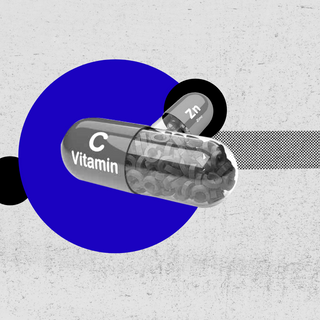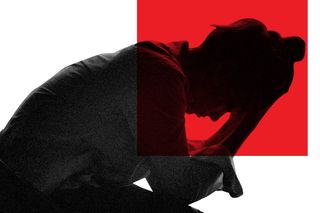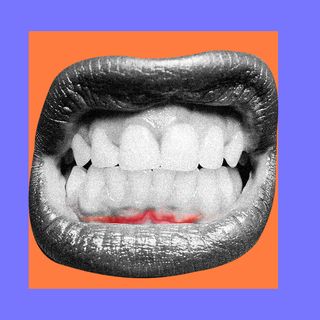
All You Need to Know About Extreme PMS
Premenstrual dysphoric disorder (PMDD) is a more severe form of PMS marked by extreme mood swings that can disrupt daily life.

“A few days ago, I started having strong suicidal thoughts. I had been feeling that way for two weeks. But that night, I actually looked up ways to end my life [and] enacted many of them in my head. … I looked up ‘PMS + suicide’ and found out about PMDD. … It’s scary how real it can get. You start picking ways and spots to end your life. You start planning it!” Shehla Rashid, an Indian human rights activist, tweeted in 2018, starting a thread on the mostly unknown, rarely understood, and serious condition called premenstrual dysphoric disorder (PMDD).
What is PMDD?
Similar to premenstrual syndrome, or PMS, but a more extreme version, PMDD can cause severe and debilitating physical and emotional symptoms, including suicidal ideation.
“My PMS was so severe that it had begun to take over my life, wreck relationships, ruin jobs [and] studying, and caused me so much emotional pain that I often found myself considering suicide. I would become housebound, with no social life or friends and fearful of ever making an appointment because I could never guarantee how I would be feeling,” Cat, 34, wrote of navigating PMDD from the age of 13. She was consistently misdiagnosed with depression until age 27.
Research suggests that between 20% to 40% of women experience moderate to severe PMS, and around 3% to 8% of women experience PMDD, whose symptoms are extreme enough to interfere with their personal and professional lives.
Related on The Swaddle:
Lockdown Stress Is Disrupting Menstrual Cycles
What are the symptoms of PMDD?
Not everyone experiences the same combination, or even the same severity, of PMDD symptoms. Generally, symptoms start between five to 11 days before an individual begins their period and often fade away with the period’s end, returning ahead of the next cycle.
“A week before my period, I become a complete psycho, completely unlike myself. I’m tearful, want to eat everything that’s sweet or salty, have absolutely no tolerance for anything other than perfection, and prefer to be left completely alone,” Kristen L., 40, who suffers from PMDD, told Women’s Health Magazine.
PMDD can present a wide range of emotional and physical symptoms, some of which are:
- anxiety, irritability, anger, and mood swings;
- depression, feelings of hopelessness, or paranoia;
- severe fatigue;
- inability to focus;
- abdominal bloating, appetite fluctuations, and gastrointestinal issues;
- headaches, backaches, and muscle spasms;
- hot flashes;
- decreased sex drive;
- breast tenderness;
- dizziness; and
- painful periods.
Physical symptoms of PMDD can be as debilitating as emotional ones. “From the time I got my period at age 12, I’ve had extreme cramps and heavy bleeding. I’d leak at school through a super maxi pad every class so I’d tie sweatshirts around my waist and have to scrub my clothes when I got home. It was super humiliating. I’d have to take six to eight ibuprofen at a time to deal with cramps, and if I didn’t I’d end up on the floor sweating like I had the flu. Sometimes I’d even throw up,” Mandy P., 39, another woman with PMDD, told Women’s Health Magazine.
Related on The Swaddle:
PMS Isn’t Insanity. But Menstrual Psychosis Is a Real Condition.
What causes PMDD?
Just like PMS, the cause of PMDD remains unknown. Experts hypothesize that it could be an abnormal reaction to hormonal changes — particularly to dips in levels of serotonin — during one’s menstrual cycle, since the disorder inhibits one’s ability to control mood, attention, sleep, and pain. In other words: some people may just be more sensitive than others to normal hormonal fluctuations.
However, individuals with a personal or family history of depression or other mood disorders are considered more vulnerable to PMDD.
Can PMDD be treated?
While PMDD can’t be cured — its monthly, recurring symptoms sometimes lasts until one hits menopause — clinicians have a series of ways to alleviate its symptoms.
According to the American College of Obstetricians and Gynecologists, medication is recommended to help people better manage. This could include different kinds of antidepressants, pain killers, nutritional supplements, or even birth control pills.
Therapy is also one of the ways to deal with PMDD. “I have found that counseling has helped, along with mind techniques such as [cognitive behavioral therapy], [neuro-linguistic programming therapy] and meditation. Finding support is essential. Being able to talk through the irrational thoughts can usually avert disaster,” Cat writes.
Additionally, practitioners may also recommend changes in diet, like cutting back on sugar, caffeine, alcohol, and smoking; or changes in lifestyle, like getting regular sleep and exercise, to deal with PMDD better.
Devrupa Rakshit is an Associate Editor at The Swaddle. She is a lawyer by education, a poet by accident, a painter by shaukh, and autistic by birth. You can find her on Instagram @devruparakshit.
Related


Air Pollution Might Explain the 30% of Infertility With No Known Cause: Large Chinese Study
